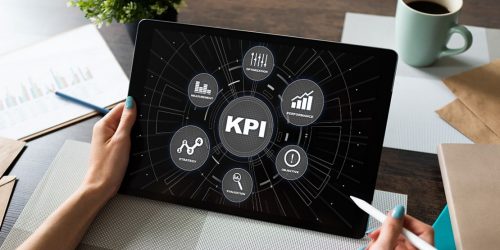What are the 6 steps to build a lasting relationship with your suppliers?
Boosted by digital transformation and the rise of technology, the procurement department has undergone remarkable development over recent years. Its practices have been accelerated and have become more reliable, and its insertion into the company’s strategy has strongly improved. However, the basics of the procurement process haven’t changed. The requirement to respond with as much added value as possible to a purchasing request (through sourcing, then supplier referencing) is still the priority for procurement teams. Although the procurement process is now based more on digital resources and skills, these steps remain essential.
Procurement process: the three key stages of sourcing
Sourcing is the opening phase to identify the most appropriate response. In this first phase of the procurement process, the buyer follows three main steps.
Qualifying the internal customer’s need
For goods and services that have not yet been listed, the first step in the purchasing process is to help the internal customer to specify their need. The quality of the response provided by the procurement department lies, first of all, in taking into account all the use parameters of the requested product.
The specifications include, for example:
- Product identification (usual name, function, etc.);
- Quantification of the need (volume, deadline, duration, location of consumption, etc.);
- The quality criteria (range positioning, reference equivalent, certification, etc.);
- The conditions of use (association with another supply, specific context of use, direct or indirect constraints, etc.);
- The service requirements (packaging, emergency availability, etc.);
- The additional services (installation and assembly, return and recycling of products at end-of-life, etc.).
The discussion with the internal customer enables the buyer to qualify their needs precisely. In certain cases, it may also result in the definition of an alternative, more innovative approach compared to the initial request. The procurement team’s know-how when listening to the request and identifying the challenges as a whole is essential here.
Identifying potential suppliers
Based on the specifications and according to the data available, the second step in the procurement process is to put together a panel of partners that will be part of the supply chain. This panel brings together the stakeholders who should be able to deliver the product that meets the specifications.
For each of the suppliers included in the panel, qualification work is carried out according to the criteria of the business’ procurement policy:
- Observing ethical and CSR (Corporate Social Responsibility) rules;
- Economic longevity;
- Logistical and supply capacity;
- Reputation, scoring and accreditations;
- Compatibility with the organization’s digital e-procurement
The procurement department then gets a tight panel of suppliers that serves as a basis for the consultation stage.
Launching the consultation also referred to as a call for tender
The procurement team invites each of the suppliers selected in the panel to take part in the consultation through a call for tender. The clauses of this third step in the procurement process are specified in a series of documents:
- Consultation rules;
- Specifications;
- Contractual conditions.
In parallel to the consultation’s launch, the procurement team draws up a scoring chart bringing together all the useful criteria to distinguish between the competitors.
The consultation generally takes place in two phases:
- A study of the applications received at the end of which the least interesting applications are eliminated;
- One or more oral presentations by the companies with the best applications with questions and answers and potentially a demonstration.
Purchasing process: the three key stages of referencing
Referencing is a concluding phase to situate the response from a sustainable operational perspective. This second part of the purchasing process also includes three stages.
Choosing the best supplier
This fourth step in the procurement process is based on an objective analysis of the value proposition from each of the finalists. At this stage, it’s not so much about the technical capacity to respond to the request, which is demonstrated on admission to the panel, but instead the smooth running of the partnership is assessed within the companies. The price, quality and deadlines proposed are obviously significant factors in the decision.
The procurement team’s intuition and professionalism play a very important role in considering relationships that may last several years. The selection process finally results in the choice of the most promising supplier for the company.
Negotiating the most beneficial conditions
The purpose of the fifth stage in the procurement process is to convert the promises into commitments whose observance will be measured over time. The idea is to find a win-win consensus with the future partner supplier that will maximise the company’s satisfaction without affecting the partner’s capacity to fulfill its obligations over time.
This is a negotiation stage that the procurement team must prepare for as much as possible. The buyer must anticipate the strategic points on which to focus and, of course, hone their arguments. The presence or absence of history (if the supplier who came out first in the consultation is already listed or not) is a crucial point in this negotiation process.
Setting the conditions of the partnership
The last stage in the purchasing process is capital in the sense that it makes the collaboration binding between the procurement department and the supplier for the long term through a contract.
This contract must address two aspects with as much precision as possible:
- The conditions for assessing the meeting of commitments in terms of quality, logistical management, and service provision in general;
- The conditions for contract termination, should there be any discrepancy in terms of the initial promises which blocks the collaboration with the procurement team.
The buyer’s role has considerably changed over recent decades, from an administrative function focused on products to a strategic position in charge of optimising costs, creating value, and managing risks.
Today, the procurement process is based on six key steps that help the development of a mutually beneficial customer-supplier relationship. This work lays the foundations for a sustainable supplier relationship, which must then be fostered in a continuous improvement approach.
The procurement function faces another challenge: supplier relationship management through the assessment and management of their partners’ performance. New opportunities are then open to optimise the management of these purchases: implementation of a transaction digitalisation solution (centralising product search, order, invoice, payment), deployment of the framework agreement, streamlining the supplier portfolio, etc. All these procurement projects support companies’ competitiveness.






